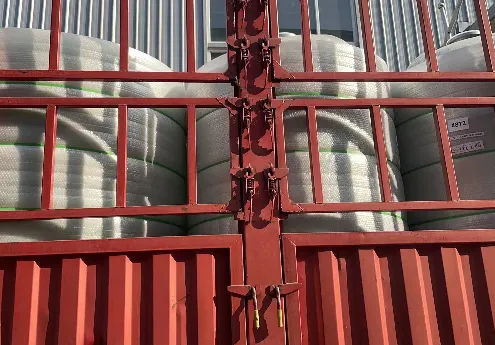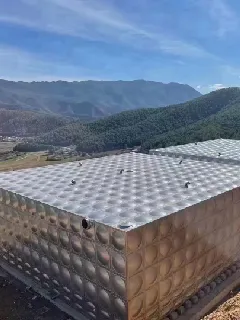loading...
- No. 9, Xingyuan South Street, Dongwaihuan Road, Zaoqiang County, Hengshui, Hebei, China
- admin@zjcomposites.com
- +86 15097380338
- Welcome to visit our website!
High Strength FRP Pultruded Gratings – Lightweight, Corrosion Resistant, Durable Solutions
- Introduction to FRP Pultruded Gratings: Core Advantages and Industry Needs
- Technical Superiority: A Deep Dive into Manufacturing Processes and Material Science
- Comparative Analysis: FRP Pultruded Gratings, FRP Moulded Gratings, and Aluminium Gratings
- Customization and Specification: Meeting Diverse Industrial Requirements
- Real-World Performance: Industrial and Infrastructure Application Case Studies
- Selection Guidelines and Procurement Strategies
- Conclusion: Why FRP Pultruded Gratings Lead Modern Industrial Infrastructure

(frp pultruded gratings)
Introduction to FRP Pultruded Gratings: Core Advantages and Industry Needs
The industrial landscape is evolving rapidly, with increasing emphasis on safety, durability, and cost efficiency. FRP pultruded gratings have emerged as a leading solution for flooring, walkways, and access platforms in several industries due to their exceptional mechanical properties and lightweight nature. Industries such as chemical processing, shipping, oil and gas, and water treatment now heavily rely on these advanced composite materials. The global market for FRP products is projected to surpass $13 billion by 2028, growing at a CAGR of 7%, a testament to the rising adoption driven by stringent safety regulations and demand for long-lasting infrastructure. Compared to traditional materials, FRP pultruded gratings not only reduce installation time and costs but also significantly improve operational safety by offering high slip resistance and non-conductive surfaces.
Technical Superiority: A Deep Dive into Manufacturing Processes and Material Science
At the heart of FRP pultruded gratings lies a continuous manufacturing process, pultrusion, which meticulously pulls fiber reinforcements through a resin bath and heated die. This results in a consistently strong, corrosion-resistant, and robust structural profile. The choice of resins – such as isophthalic, vinylester, or phenolic – allows customization of chemical resistance and fire retardancy, with glass fiber content tailored to application-specific load requirements. FRP's inherent non-magnetic and electrically insulating properties ensure optimal safety in sensitive environments. The precision of pultrusion technology provides uniform cross-sections and minimal material variability, reducing post-manufacturing inspections and enhancing reliability. Notably, FRP pultruded gratings deliver flexural strengths up to 250 MPa and compressive strengths exceeding 300 MPa, outperforming many competing materials in demanding settings.
Comparative Analysis: FRP Pultruded Gratings, FRP Moulded Gratings, and Aluminium Gratings
Choosing the right grating solution means balancing strength, weight, corrosion resistance, and life cycle cost. The table below provides a direct comparison of performance characteristics across FRP pultruded gratings, FRP moulded gratings, and aluminium gratings.
| Property | FRP Pultruded Gratings | FRP Moulded Gratings | Aluminium Gratings |
|---|---|---|---|
| Ultimate Load (kN/m2) | >500 | 300-450 | 350-600 |
| Weight (kg/m2) | ~6.7 | ~12 | ~15 |
| Corrosion Resistance | Excellent (All chemicals) | Good (Moderate chemicals) | Limited (Mild chemicals) |
| Slip Resistance | High | Variable | Moderate |
| Electrical Conductivity | None | None | Conductive |
| Fire Retardancy | Customizable (ASTM E84 Class 1 possible) | Limited | Good |
| Maintenance | Minimal | Minimal | Moderate (Corrosion, repainting) |
| Typical Lifespan (years) | 30+ | 20-25 | 15-20 |
| Environmental Footprint | Low (Recyclable components) | Moderate | Energy-intensive production |
As outlined, FRP pultruded gratings offer superior strength-to-weight ratio, enhanced chemical isolation, and longer service life compared to both FRP moulded and aluminium alternatives. Their manufacturing flexibility fosters specific property optimization, whereas aluminium gratings, although robust, are prone to corrosion in hostile environments and possess higher maintenance demands.
Customization and Specification: Meeting Diverse Industrial Requirements
Industrial requirements differ greatly depending on operational environments, load demands, and safety expectations. Customization is a core benefit of FRP pultruded grating systems. Manufacturers work closely with clients to design grating configurations that match precise load classes (e.g., pedestrian, vehicular, or industrial), panel sizes, mesh patterns, and resin formulations. Anti-slip surfacing, UV inhibitors, embedded colors, and integrated nosings can be tailored to minimize risks and match facilities' branding. Load-bearing capacities can be engineered to exceed 750 kg/m2 for heavy-duty sectors, while advanced resins cater to aggressive chemical or fire-prone environments. End-users benefit from modularity, rapid installation, and the possibility to retrofit existing structures without major overhauls. This granularity of customization ensures that FRP pultruded gratings integrate seamlessly into both new builds and renovations, minimizing downtime and maximizing long-term value.
Real-World Performance: Industrial and Infrastructure Application Case Studies
The performance of FRP pultruded gratings is validated through a diverse range of case studies in logistics hubs, public transport stations, and pharmaceutical facilities. In a recent retrofit at a European wastewater treatment plant, FRP pultruded gratings replaced traditional metal platforms, yielding a reduction in scheduled maintenance by 73% over five years and cutting operational interruptions by half. In the offshore oil sector, pultruded gratings demonstrated sustained load-bearing under dynamic wave conditions and aggressive saline exposure, outperforming aluminium by a service margin of more than 10 years. Municipal authorities deploying FRP walkways in railway stations have documented zero slip injuries since installation due to gritted surface technology. Furthermore, the aerospace sector adopted customized, lightweight FRP gratings for elevated access solutions, achieving a 25% reduction in structure weight while surpassing aerospace fire and safety standards.
Selection Guidelines and Procurement Strategies
Selecting the right grating starts by rigorously assessing application requirements, including maximum loading, environmental exposures, and safety compliance needs. A layered approach to procurement includes evaluating manufacturer track records, technical support, and product certifications—such as ISO 9001 for quality management or ASTM for mechanical testing. Collaboration with engineering teams ensures that product specifications reflect both short and long-term operational considerations. It is prudent to work with vendors who provide lifecycle analysis, samples for pre-installation testing, and post-sale support. Bulk procurement often allows for economies of scale and reduced lead times. Sustainable practices, such as local fabrication and use of recycled fibers or resins, further contribute to corporate environmental objectives and regulatory fulfillment. Ultimately, aligning all stakeholders—from engineers to procurement managers—drives project efficiency and end-user satisfaction.
Conclusion: Why FRP Pultruded Gratings Lead Modern Industrial Infrastructure
In summation, FRP pultruded gratings distinguish themselves at the forefront of industrial material innovation by synergizing superior mechanical performance, design flexibility, and environmental resilience. Their dominance over both FRP moulded gratings and aluminium gratings is established through technical metrics and validated performance in complex, real-world installations. As industries navigate evolving standards and increasing sustainability demands, selecting FRP pultruded gratings enables future-proofing of assets and operational safety. Their lightweight construction, tailored engineering, and minimal lifecycle costs make them the logical choice for visionary infrastructure projects worldwide, setting a new benchmark in safety and performance.

(frp pultruded gratings)
FAQS on frp pultruded gratings
Q: What are FRP pultruded gratings?
A: FRP pultruded gratings are fiberglass reinforced plastic panels made using the pultrusion process. They offer high strength and corrosion resistance. These gratings are ideal for industrial walkways and platforms.Q: How do FRP pultruded gratings differ from FRP moulded gratings?
A: FRP pultruded gratings are manufactured by pulling fibers through a resin bath, resulting in a higher load-bearing capacity. FRP moulded gratings are produced using a molding process and offer better chemical resistance. The choice depends on load and environmental requirements.Q: What are the main applications of aluminium gratings?
A: Aluminium gratings are commonly used in architectural, industrial, and marine applications. They are lightweight, corrosion-resistant, and suitable for flooring or ventilation. Their aesthetic finish also makes them popular for decorative uses.Q: What advantages do FRP pultruded gratings have over steel gratings?
A: FRP pultruded gratings are lighter and more resistant to corrosion than steel gratings. They require less maintenance and have a longer lifespan in harsh environments. This makes them cost-effective for long-term use.Q: Are FRP pultruded or FRP moulded gratings better for chemical environments?
A: FRP moulded gratings usually provide better chemical resistance than pultruded ones. They are ideal in environments with frequent chemical spills or aggressive fumes. Pultruded gratings are preferred for higher mechanical loads.-
GRP Structures: The Future of Lightweight, High-Performance EngineeringNewsJun.20,2025
-
FRP Water Tank: High-Performance Storage for Corrosive and Clean Water SystemsNewsJun.20,2025
-
FRP Square Tube: The New Industry Standard for Chemical and Structural ApplicationsNewsJun.20,2025
-
FRP Pultruded Profiles: The Ultimate Choice for Lightweight Structural StrengthNewsJun.20,2025
-
FRP Handrails: The Safer, Smarter, and Stronger Choice for Modern InfrastructureNewsJun.20,2025
-
FRP Grating: The Smart Solution for Durable, Lightweight Industrial FlooringNewsJun.20,2025
-
Why Choose a Galvanized Water Tank for Your Storage NeedsNewsMay.21,2025
